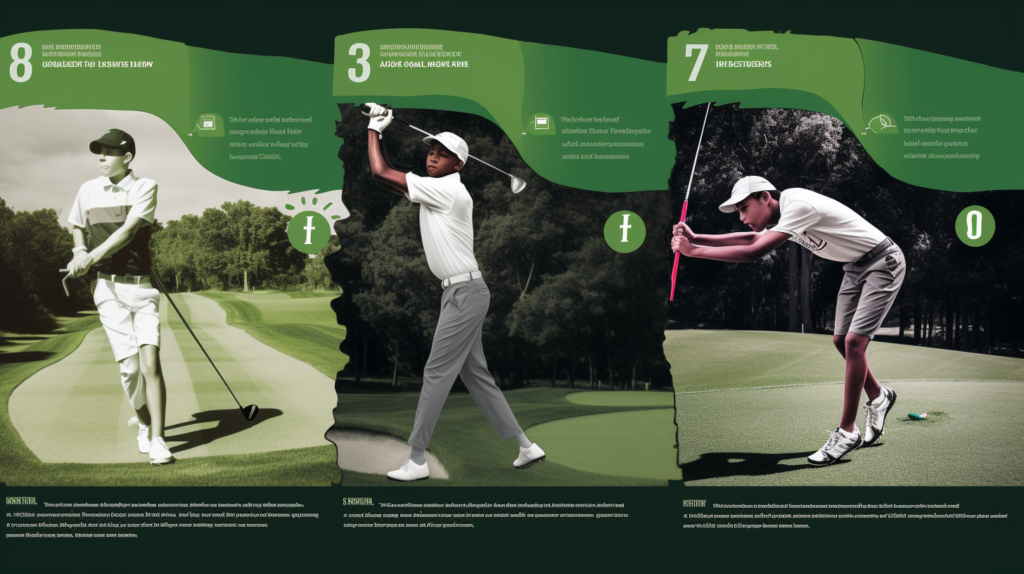Do you ever feel like you don’t measure up on the golf course against low handicap players?
Understanding the golf handicap system and range categories allows all players to embrace competition.
Let’s dive into handicap calculations, score averages and how to set realistic improvement goals.
What Is A Good Golf Handicap

A good golf handicap is a single-digit handicap which status reflecting consistency. Mid-teens handicaps indicate respectable recreational play.
Ultimately one’s handicap reflects their desired practice effort, natural talent and measured skills growth against par scoring standards. Maximizing your scoring potential ability should determine what handicap is personally “good” for any golfer.
What Is A Golf Handicap

A golf handicap is a numerical measure of a golfer’s skill level. It is used to allow players of different abilities to compete fairly against one another. A handicap is based on the average of a player’s 10 best scores from their most recent 20 rounds.
It is expressed as a number of strokes over par – the lower the handicap, the better the player.
A handicap essentially indicates how many strokes above par a player might be expected to shoot on a given day. So if Sam has a handicap of 12 and the course rating is 72, his expected score would be 84.
The genius of the handicap system is that it allows of vastly different skill levels to enjoy a competitive match despite their talent discrepancy.
Handicap Ranges

There is a wide range of potential handicaps in golf, from the elite professionals to the once-a-year amateur. Here is a breakdown of common handicap classifications:
Scratch Golfer Or Zero Handicap (0.0)
A scratch golfer or zero handicapper is someone who plays at or better than the course rating on average. This means they routinely shoot par or under.
Needless to say, having essentially no handicap is a remarkable achievement requiring immense skill and consistency. Only a tiny percentage of golfers reach this lofty performance standard.
It is essentially equivalent to being a touring professional.
Low Handicappers (0-9)
Golfers with single-digit handicaps ranging from +1 to 9 are extremely proficient players. They have very low margin for error and expect to make few mistakes in a round.
These players demonstrate mastery of the full array of golf shots and course management. While they may not play for money, low handicappers are often referred to as “professional-caliber amateurs.”
Average Handicappers (10-19)
The range covering handicaps 10-19 includes most recreational and club-level competitors. An average 15-handicapper might shoot around 90 on a par 72 layout. With a few bad holes factored out by the handicap formula, they can stay competitive against other amateur players.
Getting down to a mid-teens handicap requires developing consistent ball-striking and avoidance of major mishaps.
High Handicappers (20+)
Anyone with a handicap of 20 or higher remains in the early stages as a golfer. They likely struggle with making solid contact, penalty strokes, or putting.
However, high handicappers still enjoy testing themselves against the course and their playing partners by using their stroke allowance. With practice, getting into the mid-handicap levels is a realistic objective.
What Constitutes A “Good” Handicap

Interpreting what makes for a good handicap is subjective based on the player’s skill level, experience, age, and measuring their results versus personal goals. Here are a few ways to evaluate it:
For A Beginner Or Casual Player
Brand new golfers first getting acquainted with the game’s challenges should not worry much about score or handicap. However, tracking progress against your own personal bests shows improvement.
Once a player can officially establish a handicap after submitting acceptable scores, getting down into the mid 20s is respectable for a recreational player. The lower the better obviously, but maintaining reasonable expectations based on practice time and skill development is key.
For The Committed Amateur Golfer
Golfers who play frequently and work diligently on their game are rightfully proud of handicaps in the low teens.
Shooting consistently near 90 indicates things are coming together nicely regarding course management capability, mental composure and well-rounded fundamentals.
From this level, getting down near 80 and a handicap in the 8-10 category is reasonably within reach given regular practice and play.
For Competitive Amateurs Seeking To Improve
When a player reaches single-digit handicap territory, motivation may shift from casual recreation to wanting to achieve the highest competitive level possible. At this stage, precision shotmaking skills get sharpened versus just trying to keep the ball in play.
Strategic course management also grows more nuanced and a handicap in the 3-5 range signifies having advanced talent and scoring ability.
Recreational Golfers And Scratch Handicaps
Only a very small fraction of recreational players set their sights on joining the rarefied air of scratch golfers. Halving your handicap once below 10 becomes exponentially more difficult.
However, some amateurs do dedicate themselves fully to mastering their short games, scrambling techniques and the mental side of shotmaking. It requires almost an obsession given the athleticism and precision necessary to post zero handicap rounds.
Getting An Official USGA Handicap

While many golfers keep unofficial tabs on their general scoring range, having an authorized USGA issued handicap enables equitable competition in events and tournaments. Here is the formal process:
To get a USGA handicap index, a golfer needs to post a minimum of 5 scores playing full acceptable 18-hole rounds. At first, the best 1 score of the 5 gets factored into the index calculation.
After shooting and posting 10 rounds, it expands to taking your best 2 scores. Once 20 complete rounds get posted, the handicap index derives from a golfer’s 10 best performance scores.
The handicap formula itself also accounts for the respective course’s rating as well as its slope rating reflecting the relative playing difficulty. This allows players’ indexes and handicaps to translate evenly between courses regardless of length or challenge.
Golfers have the tools and flexibility today by joining affiliated golf clubs or authorized handicapping associations at regional and national levels. This provides easy access and convenient means to establish and maintain certified USGA handicap indexes.
The integrity and spirit of this peer review system depends on golfers posting their actual scores after applying the equitable stroke control adjustment. Good handicaps enable all involved to enjoy competition at levels where they can play their best on the day.
Tips For Improving Your Handicap

While perfecting your golf game poses an endless pursuit, players focused on steadily improving their scoring ability and lowering their handicap index can get there with proper practice, analysis and reasonable goal setting:
Take Golf Lessons And Practice Fundamentals
Evaluating your performance skill by skill will determine key areas needing improvement to shoot lower scores.
Even golfers with established handicaps can benefit from professional instruction targeting areas like the full swing, chipping, putting, sand saves among other techniques. Often minor adjustments make big differences correcting flaws holding back your scoring potential.
Analyze Strengths And Weaknesses Using Shot Tracking Technology
With shot tracking apps and swing analyzers, it is easy today to compile data on your golf game. Review statistics identifying specific clubs or scenarios costing lots of penalty strokes.
Look at putts per round, greens hit in regulation, sand saves percentage – the granularity helps develop strategies lowering scores.
Work On Your Short Game And Trouble Shots
It is proven that over two-thirds of all golf strokes occur from 100 yards and in from the green. Yet amateur players often spend most of their practice on the sexier full swing and driving range.
However, sharpening pitching, chipping, bunker and putting skills is the fastest way to save strokes and improve your handicap number.
Play Golf With Better Players To Test And Evaluate Your Skills
Routinely playing with more skilled golfers exposes flaws or weaknesses in your game you may not realize at your normal level.
Having your skills tested outside your comfort zone forces adjustment, faster learning and clarifies areas requiring attention to get to the next performance plateau. It also serves up firsthand examples of what making good shots looks like.
Set Reasonable Goals And Milestones For Lowering Your Handicap Index
Breaking through into new handicap ranges poses significant challenges the lower you go. Expecting to rapidly drop 10 strokes or more from your scoring average or handicap index typically sets golfers up for frustration.
Have a plan targeting incremental improvements say month to month and year over year. Small gains made consistently over time lead eventually to big handicap improvements.
Conclusion
In closing, a golfer’s handicap index is more than just a number – it represents the time and effort to develop skills and scoring capability.
Setting personal goals, analyzing your performance metrics and incrementally improving through lessons and practice allows all players to enjoy competition at their level.
For both professionals and amateurs alike, realizing your potential via your golf handicap signifies an achievement to take pride in.



